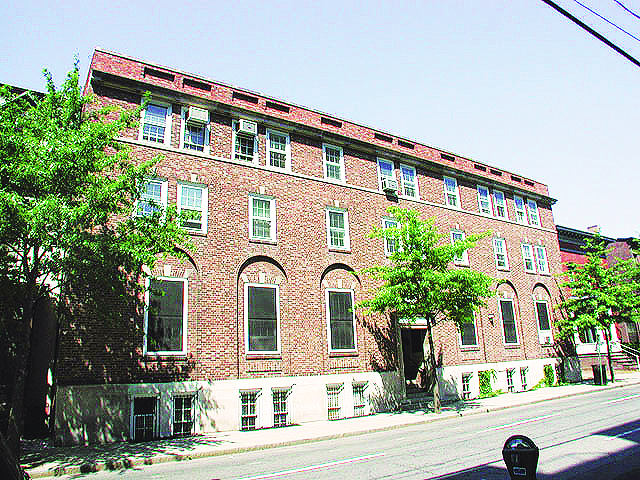
yaleuniversity
The Arab Students Association, alongside other student groups, is working with the Yale College Council to push for the creation of a fifth cultural house for students from the Middle East and North Africa.
Currently, students from the MENA region are given peer liaisons from the Asian-American Cultural Center or the Afro-American Cultural Center, depending on what specific country they identify with. Most students with North African heritage are paired up with a student from the Af-Am House, and those of Middle Eastern descent are connected with someone from the AACC.
Shady Qubaty ’20, who is president of the Arab Students Association and has Yemeni heritage, said that establishing a MENA cultural house is necessary because breaking up students from the MENA region into Asian- and African-identifying cultural centers “disregards the social and cultural realities” of people with heritage from the region.
“Students shouldn’t be divided by geography because culture isn’t just based on geography,” Qubaty told the News. “We need a MENA house on campus to cultivate a community of MENA citizens or students who are actively striving towards creating an apolitical haven for students to celebrate and for us to appreciate our countries together.”
Qubaty reached out to the YCC at the end of last semester to ask for its support with the initiative. He said that working with the YCC on a MENA cultural house was the “obvious way forward,” though the other cultural houses came into existence through other means. Yasmin Alamdeen ’21, the outreach chair of the Arab Students Association, said that the other cultural houses were created as a result of student protests. By reaching out to the YCC, she said, the group could reach the University administration both directly and peacefully.
Sammy Landino ’21, YCC’s task forces director, said that the YCC was also helping the group collect more data about students with ties to the MENA region through the YCC’s annual fall survey.
“We have a particular set of resources that enable us to facilitate student-wanted change, and we think that founding a MENA cultural house is something that is in line with making Yale a more progressive and inclusive place, and we champion that for all students,” Landino told the News.
According to Yale College Council President Saloni Rao ’20, the YCC has also given students leading the charge for a MENA house access to a room in 305 Crown St. to host MENA cultural events. Qubaty told the News that the space will be used as the “MENA Cultural House Room” and will demonstrate how students would potentially use the new cultural center, if established.
The space was previously used for what Rao described as “YCC operations,” but after Qubaty asked the Council for a place for the group’s events — which Rao described as a “much worthier cause” — the YCC gave him the key to the room.
Alamdeen is currently working with Qubaty to demonstrate student interest in the initiative to Yale administrators.
“It’s going to become, first, a club,” Alamdeen said. “So what we’re trying to do is create a club around that house and promoting it and doing different activities and cultural events to show that it’s necessary and it’s being used well so that Yale can acknowledge it and make it more official.”
While both Qubaty and Alamdeen are members of the Arab Students Association, Qubaty emphasized that the cultural house was not an “[Arab Students Association] initiative, per se.” He added that the organization has been reaching out to the Persian Students Association, Friends of Turkey and Ward 1 Alder Hacibey Catalbasoglu ’19 to build interest in the project.
Catalbasoglu expressed his support for the idea, noting that it was especially important now to establish such a space, considering the political climate in the United States.
“In 2018, when Middle Eastern- and North African-Americans, especially from predominantly Muslim countries, are seen as scapegoats and targets by certain groups nationally, it is important that we have our own space to come together, celebrate our culture, organize and coalesce,” Catalbasoglu told the News.
Qubaty and the YCC are also working with Yale to establish a new racial subcategory for Middle Eastern and North African students on Yale’s Student Information Systems website.
Currently, students can identify themselves in five categories: Asian, Black/African-American, Native American/Alaskan Native, Native Hawaiian/Other Pacific Islander and White. Students from the MENA region are categorized under “White” in the existing system, which is why, Qubaty and Alamdeen said, a separate subcategory is necessary.
“A lot of Middle-Eastern and North African people don’t feel white,” Alamdeen told the News. “I think now is the time, especially in today’s climate, to sort of realize that there is more nuance to culture than just what the nationally accepted categories are.”
According to Qubaty, a new subcategory would also help students leading the initiative to identify students on campus who have Middle Eastern and North African heritage and reach out to them.
Director of the Afro-American Cultural Center and Chair of Yale’s Intercultural Affairs Council Risë Nelson says she supports “increased programming and resources” for the MENA community at Yale.
“I am supportive of increased programming and resources that celebrate the histories of this growing community at Yale and in New Haven and that facilitate the success and engagement of students of Middle Eastern heritage,” Nelson said. “[But] because I haven’t seen a proposal for the establishment of a MENA Cultural House, I can’t comment on the proposed initiative.”
The Afro-American Cultural House was established in 1969 and the Asian American Cultural Center was established in 1981.
Aakshi Chaba | aakshi.chaba@yale.edu







